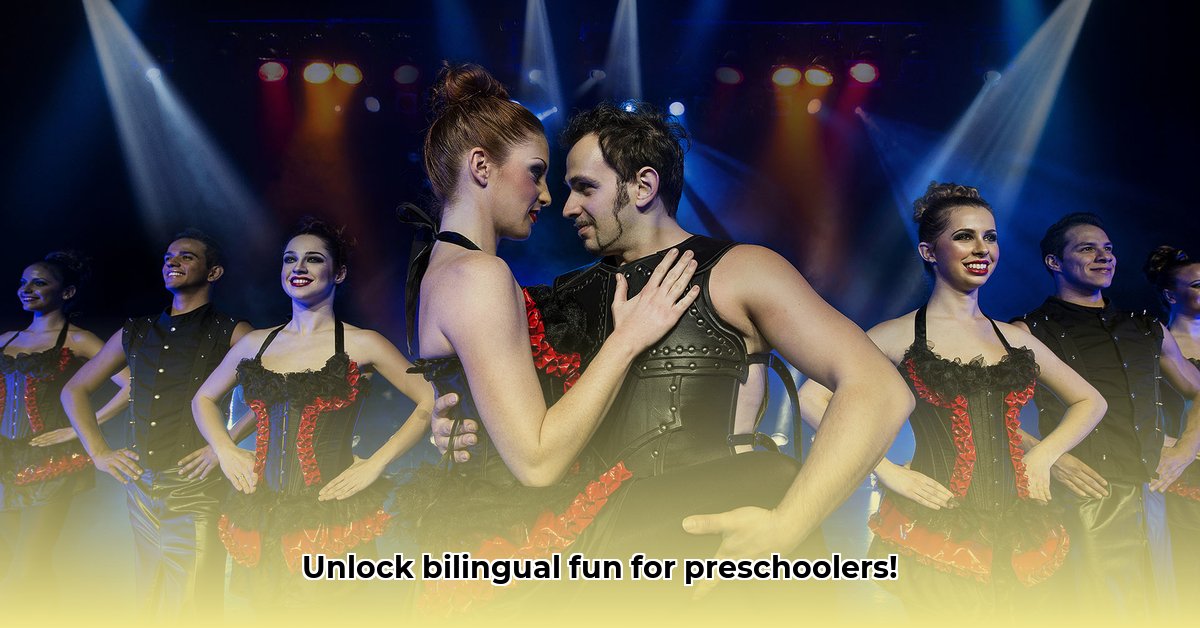Looking for a fun and educational show for your little ones that also teaches them another language? Then check out Rosie’s Rules! This show is all about learning important life lessons through playful adventures. It’s in both English and Spanish, making it super cool for bilingual families. We’ll tell you what makes it tick, what could be even better, and how to get the most out of watching it with your kids. Let’s see if Rosie’s Rules is the perfect fit for your preschooler! Learn more about the show’s characters by visiting the Rosie’s Rules cast page.
About the Show Rosie’s Rules: A Bilingual Adventure for Little Learners
Get ready for fun with language development! Rosie’s Rules is a super-engaging preschool show that’s not only entertaining but also helps little ones learn valuable life skills. Think bright colors, catchy tunes, and a heartwarming story about a little girl named Rosie living in sunny San Antonio, Texas. The coolest part? Rosie speaks both English and Spanish, making it a fantastic way for kids to pick up some Spanish along the way, encouraging bilingualism and language acquisition! The series premiered on October 3, 2022, on PBS Kids.
What Makes Rosie’s Rules Tick?
Rosie’s Rules isn’t just about giggles; it’s about teaching valuable life lessons in a fun, accessible way. Each episode follows Rosie as she tackles everyday situations, like sharing toys or solving small problems. The show utilizes these experiences to teach simple life skills, all while keeping things light and fun. It’s like watching a friendly friend help with little problems and give solutions. It’s all about observational learning – kids learn by watching Rosie navigate these situations.
The Ups and Downs of Educational Programming
Let’s be honest, every children’s show has its strengths and weaknesses. Rosie’s Rules is no exception. Here’s a closer look:
What Rosie’s Rules Does Well:
- Engaging: The episodes are short and perfectly paced for little ones’ attention spans. The bright colors, catchy songs, and Rosie’s charming personality keep them hooked! It’s like a fun mini-adventure in every episode.
- Bilingual Fun: The blend of English and Spanish is a major plus! Kids are exposed to a new language naturally. It’s effortless learning at its best.
- Rosie’s a Star: Rosie is incredibly relatable. She shows a range of emotions – happiness, sadness, frustration – just like real kids. This helps children understand and accept their own feelings. They see themselves in Rosie.
- Sneaking in Life Lessons: The show cleverly slips in valuable lessons about sharing, kindness, problem-solving, and more. These are essential life skills for little ones, presented in a way that’s easy to understand and remember.
Areas for Growth:
- More Research Needed: While the show has educational value, more studies are needed to measure its impact on children’s language development and overall learning.
- Room to Expand: Currently, the show’s lessons focus on a specific set of life skills. Expanding these to cover a wider range of early childhood development topics could further enhance its educational value. Think about adding topics like healthy eating habits or environmental awareness.
- Beyond San Antonio: The setting in San Antonio is great for showing cultural diversity. However, making the setting more adaptable for different cultures around the world could broaden its appeal significantly.
Who’s This Show For?
Rosie’s Rules is designed for preschoolers aged 3 to 5. The simple stories, relatable characters, and catchy music are perfect for this age group. Parents and teachers will also appreciate the bilingual aspect and the subtle educational value.
Making Rosie’s Rules Even Better
To truly unlock Rosie’s Rules’ full potential, some strategic steps could make a big difference:
| Stakeholder | Actionable Steps | Long-Term Vision |
|---|---|---|
| Show Creators | Conduct thorough studies to measure the show’s real impact. Explore adapting the location to different settings. Create supplementary materials like online games or activity books. | Expand the show’s curriculum to encompass a broader range of early childhood development skills. Develop spin-off shows or new characters. |
| Parents & Educators | Use the show to spark conversations with children. Supplement the show with related books and activities. | Advocate for more research into children’s media and promote bilingualism in communities. Support the show’s continued development and expansion. |
| Researchers | Conduct studies on the show’s impact on language acquisition and cognitive development. Develop better methods for evaluating the educational effectiveness of children’s media. | Contribute to evidence-based recommendations for creating engaging and effective educational programming for children. |
A Bright Future for Rosie
Rosie’s Rules is a promising show with loads of potential. It’s already doing many things well, providing a fun and engaging way for preschoolers to learn English and Spanish. With careful planning and continued improvement, this show has what it takes to become a truly exceptional educational resource for kids worldwide. The possibilities are exciting! Rosie Fuentes is an inquisitive and hilarious 5-year-old Mexican-American girl just beginning to learn about the wow-mazing world beyond her family walls.
How to Measure the Educational Impact of Rosie’s Rules
Key Takeaways:
- Rosie’s Rules blends entertainment and education, using a bilingual approach.
- The show’s effectiveness hinges on parental involvement and supplementary activities.
- Measuring the show’s impact demands a multifaceted approach.
- A deeper dive into cultural representation and curriculum integration is needed.
Rosie’s Rules: A Bilingual Adventure
Rosie’s Rules is a vibrant preschool show captivating young viewers with its charming characters and engaging storylines. It cleverly incorporates bilingualism (English-Spanish), making it a unique resource for early language development and promoting cultural awareness. But how do we actually measure its educational impact?
What Makes Rosie’s Rules Tick?
The show centers on Rosie, a relatable preschooler navigating everyday challenges. Her problem-solving leads to “Rosie’s Rules”—simple life lessons framed in a fun, memorable way. It’s not just about learning words; it’s about understanding emotions, like managing frustration (“flopping”). The show also offers a window into Mexican-American culture, enriching children’s understanding of diversity.
Assessing the Educational Value: A Multi-pronged Approach
How to measure the educational impact of Rosie’s Rules is a complex question. We can’t rely on one single metric. We need to consider several aspects:
-
Quantitative Data: This involves measuring things like vocabulary growth and improvement in social-emotional skills. Researchers could conduct controlled studies comparing children who watch Rosie’s Rules regularly with those who don’t.
-
Qualitative Data: This is where parent feedback, educator insights, and viewer engagement metrics come into play. Do parents find the show helpful? Do educators incorporate it into their lesson plans? Do children actively discuss the concepts presented?
-
Curriculum Alignment: How well does the show align with established preschool learning objectives? Does it cover key areas like social-emotional development, language acquisition, and cultural awareness in a comprehensive manner?
-
Beyond the Screen: The show’s impact depends heavily on how it is used. Parents can amplify the educational value by engaging in discussions with their children after viewing episodes. Educational materials, such as activity books or online games, can reinforce the show’s lessons. Rosie is nurtured by a multicultural blend of influences, as her father’s family originated from Mexico City and her mother is from Wisconsin
Areas for Improvement: Expanding the Scope of Skills and Topics
While Rosie’s Rules shines in many areas,
No videos found for the given keyword.
- The Accidental Breakthrough: Penicillin’s Discovery and Impact - August 1, 2025
- Medieval Universities: Shaping Modern Academia - August 1, 2025
- The Radium Girls: Workplace Safety Lessons from a Tragic Past - August 1, 2025
















